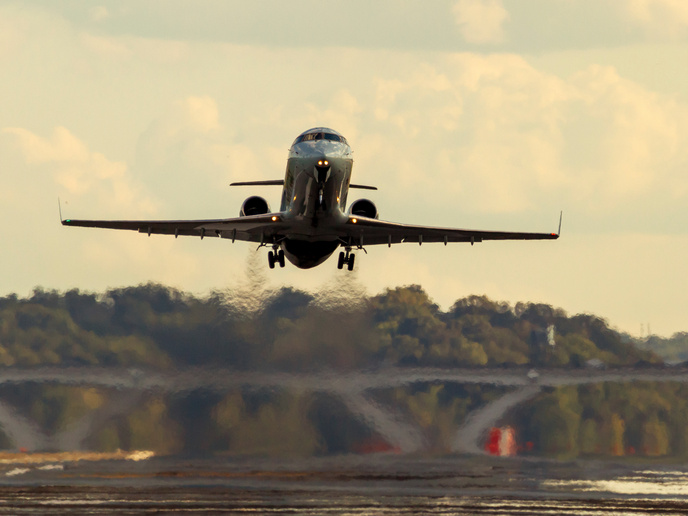A multi-faceted approach to understanding aircraft emissions
Aviation is the second-largest producer of transport greenhouse gases and an important source of particle emissions. As mobility demands continue to rise, all aspects of air travel require close scrutiny to minimise negative impacts. The EU-funded AVIATOR(opens in new window) project used a variety of descriptive and quantitative tools to achieve greater sustainability in air travel by focusing attention on emissions.
An enhanced understanding of primary emissions
AVIATOR employed a multi-level approach to assess pollutant emissions at engine exit, as well as to understand how the pollutants in exhaust plumes spread. The measurement campaigns were carried out in three different scenarios. Project coordinator, The National Institute for Aerospace Technology ‘Esteban Terradas’ (INTA) test bed was the main source. On-wing measurements were carried out at Ciudad Real International Airport, and ambient measurements in three international airports (Madrid, Copenhagen and Zurich). The aim was to better understand the impact of ultrafine particles (UFPs) and gaseous emissions such as sulfur oxides and nitrogen oxides. Measurements and modelling were crucial to enhancing understanding of how emissions impact the environment. Using different softwares such as LASPORT(opens in new window), CEDRE, which is a multi-physics platform, and Computer Assisted Design (CAD) technology, high-fidelity modelling of exhaust dynamics allowed scientists to map the microphysical and chemical processes at work. The achievements of AVIATOR are certain to continue beyond the time frame of the project. According to the coordination team: The datasets resulting from the various measurement campaigns in AVIATOR provide a sound base for further developments in modelling aircraft exhaust dispersion and the dynamics of ultrafine particles. Eventually, some of them may serve as a ‘gold standard’ for the validation and harmonisation of modelling.
Engagement with regulatory agencies
Improved description and quantification of aircraft emissions are essential to establish better health and environmental guidelines. In addition to obtaining significant scientific results, AVIATOR worked with several organisations that develop and administer regulations in the air transport industry. Project partners served as members of the Committee on Aviation Environmental Protection(opens in new window) (CAEP), which operates within the International Civil Aviation Organization (ICAO). Other health and regulatory agencies were actively involved in the project through the advisory board. This list includes the Dutch National Institute for Public Health and the Environment (RIVM), the European Aviation Safety Agency (EASA), the Federal Office of Civil Aviation (FOCA) as well as the Federal Aviation Administration (US-FAA), among others. The advisory board provided direct access to policy development, and it also ensured that the project kept in mind a broad cross section of concerns. The coordination team states: The strong participation of advisory board members with advice on new agendas and relevant studies ensured that the focus of the project remained grounded in the needs of stakeholders. Using a diversified approach involving modelling, assessment and measurement, AVIATOR created a rich dataset. Analysis of this material is far from complete, and continued exploration will undoubtedly yield further insights. In addition to other communication channels, academic project partners will share all findings and outcomes of AVIATOR through conferences and scientific journals. The project consortium is well connected to many regulatory agencies, and the impact of the project will continue to grow. By looking at the effects of aviation exhaust from many angles, AVIATOR is making Europe a healthier, more environmentally friendly place to live.







